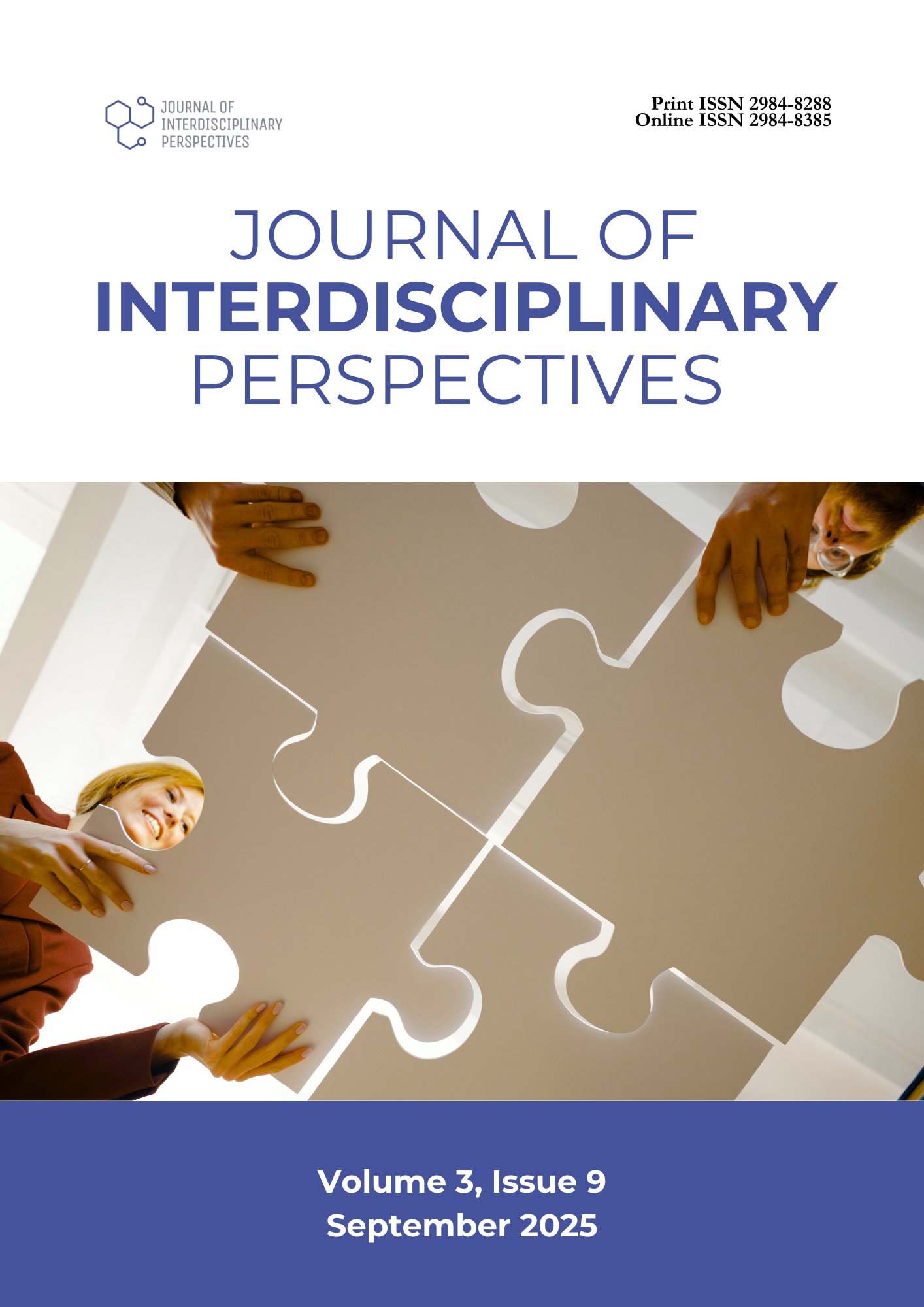A Strategic Action Plan for Building Modern Industry Colleges at Jiangxi University of Technology in China: Insights from Stakeholder Assessments
DOI:
https://doi.org/10.69569/jip.2025.541Keywords:
Modern industry colleges, Stakeholder assessment, Industry-education integration, Higher education reform, Strategic action planAbstract
This study examines the current status, challenges, and developmental pathways of Modern Industry Colleges (MICs) at Jiangxi University of Technology (JUT) in China, to craft a strategic action plan that supports sustainable higher education reform. MICs envisioned as collaborative platforms between academia and industry are central to aligning education with regional economic needs and national innovation strategies. Despite growing policy attention, empirical studies on stakeholder perceptions remain limited. This research addresses that gap through a comprehensive survey-correlational design involving 360 stakeholders, including students, faculty, industry staff, government officials, and community members. Using a validated instrument (Cronbach's α = .978), the findings reveal that MICs are perceived to be in a "Fair" state (M = 2.50), "Moderately Challenging" to develop (M = 2.62), and "Somewhat Promising" in terms of prospects (M = 2.57). Significant positive correlations were found among status, challenges, and pathways (r = .524–.680, p < .001), highlighting the interconnectedness of these dimensions. Based on the results, the study proposes a multi-faceted strategic action plan comprising six thematic areas and over 30 targeted initiatives focused on strategic governance, curriculum innovation, faculty development, industry partnerships, infrastructure modernization, and policy advocacy. The study contributes to academic literature and institutional practice by offering a replicable framework grounded in stakeholder engagement and systems theory. It underscores the urgent need for policy synergy, continuous stakeholder feedback, and university-industry collaboration to transform MICs into engines of innovation, talent development, and regional growth.
Downloads
References
Adhikari, D. R., & Shrestha, P. (2023). Knowledge management initiatives for achieving Sustainable Development Goal 4.7: Higher education institutions’ stakeholder perspectives. Journal of Knowledge Management, 27(4), 1109–1139. https://doi.org/10.1108/JKM-03-2022-0172
Austin, I., & Jones, G. A. (2024). Governance of higher education: Global perspectives, theories, and practices. Routledge. https://doi.org/10.4324/9781003283652
Carayannis, E. G., Campbell, D. F., & Grigoroudis, E. (2022). Helix trilogy: The triple, quadruple, and quintuple innovation helices from a theory, policy, and practice set of perspectives. Journal of the Knowledge Economy, 13(3), 2272–2301. https://doi.org/10.1007/s13132-021-00813-x
Chlebna, C., & Suitner, J. (2025). The transition development nexus: Disentangling growth and transformation agendas in regional sustainability transitions. Review of Regional Research, 1–21. https://doi.org/10.1007/s10037-025-00231-5
Er, E., Dimitriadis, Y., & Gašević, D. (2021). A collaborative learning approach to dialogic peer feedback: A theoretical framework. Assessment & Evaluation in Higher Education, 46(4), 586–600. https://doi.org/10.1080/02602938.2020.1786497
Gázquez, J. L. R., Delgado, M. V. B., Gras, J. J. O., Lova, J. G., Gómez, M. V. G., & Zbiec, M. (2021). Lack of skills, knowledge and competences in higher education about Industry 4.0 in the manufacturing sector. RIED-Revista Iberoamericana de Educación a Distancia, 24(1), 285–313. https://doi.org/10.5944/ried.24.1.27548
Hoshaw, J. P., Ben-Avie, M., Daughtery, K. K., Santilli, N. R., Schramm-Possinger, M., Di Genova, L., & Isaacson, E. M. (2021). Integrated planning: The "difference that makes a difference" in institutional effectiveness over time. Intersection: A Journal at the Intersection of Assessment and Learning, 2(3), Article n3. https://tinyurl.com/2fdd8dh2
Kauffman, N., & Hill, K. (2021). Climate change, adaptation planning and institutional integration: A literature review and framework. Sustainability, 13(19), 10708. https://doi.org/10.3390/su131910708
Kwok, L. (2022). Labor shortage: A critical reflection and a call for industry-academia collaboration. International Journal of Contemporary Hospitality Management, 34(11), 3929–3943. https://doi.org/10.1108/IJCHM-01-2022-0103
Nicolescu, B. N., & Petrescu, T. C. (2017). About the systems theory in the field of education sciences. European Proceedings of Social and Behavioural Sciences. https://tinyurl.com/2fdd8dh2
Ostrom, E. (2025). Doing institutional analysis: Digging deeper than markets and hierarchies. In Handbook of new institutional economics (pp. 73–102). Springer Nature. https://doi.org/10.1007/978-3-031-50810-3_5
Oteyi, J. V., & Dede, D. (2025). Digital disconnect in education: The administrative challenge of aligning rhetoric and reality in the implementation of AI-powered and non-AI digital tools. International Journal of Educational Management, Rivers State University, 1(1), 196–208. https://ijedm.com/index.php/ijedm/article/view/18
Thompson, P., & Laaser, K. (2021). Beyond technological determinism: Revitalising labour process analyses of technology, capital and labour. Work in the Global Economy, 1(1–2), 139–159. https://doi.org/10.1332/273241721X16276384832119
Tucker, R. C., Robinson, S. J., Liyanage, C. L., Fernandez, P. L., Cortez, L. A., Montebon, D. R., Tantanee, S., Khiewnavawongsa, S., Chaimoon, N., Weerasinghe, K. D. N., Gunawardena, K. S. L., & Dissanayake, R. (2024). Bridging academia and enterprise: A framework for collaborative success. Journal of the Knowledge Economy. https://doi.org/10.1007/s13132-024-02360-7
Wise, G., Dickinson, C., Katan, T., & Gallegos, M. C. (2020). Inclusive higher education governance: Managing stakeholders, strategy, structure and function. Studies in Higher Education, 45(2), 339–352. https://doi.org/10.1080/03075079.2018.1525698
Yang, C. (2024). Research on China's industrial structure upgrading and. In Proceedings of the 4th International Conference on Internet Finance and Digital Economy (ICIFDE 2024) (Vol. 301, p. 153). Springer Nature.
Yin, Z., Zhu, R., Wu, J., Yang, P., Song, X., & Wang, S. (2025, May). Research on the reciprocal university-enterprise cooperation model based on industry-education integration. In 2nd International Conference on Educational Development and Social Sciences (EDSS 2025) (pp. 640–648). Atlantis Press. https://doi.org/10.2991/978-2-38476-400-6_75
Zhang, Y., & Chen, X. (2023). Empirical analysis of university–industry collaboration in postgraduate education: A case study of Chinese universities of applied sciences. Sustainability, 15(7), 6252. https://doi.org/10.3390/su15076252
Zhuang, T., Oh, M., & Kimura, K. (2025). Modernizing higher education with industrial forces in Asia: A comparative study of discourse of university-industry collaboration in China, Japan and Singapore. Asia Pacific Education Review, 1–16. https://doi.org/10.1007/s12564-024-10033-y
Downloads
Published
How to Cite
Issue
Section
License
Copyright (c) 2025 Journal of Interdisciplinary Perspectives

This work is licensed under a Creative Commons Attribution-NonCommercial 4.0 International License.








